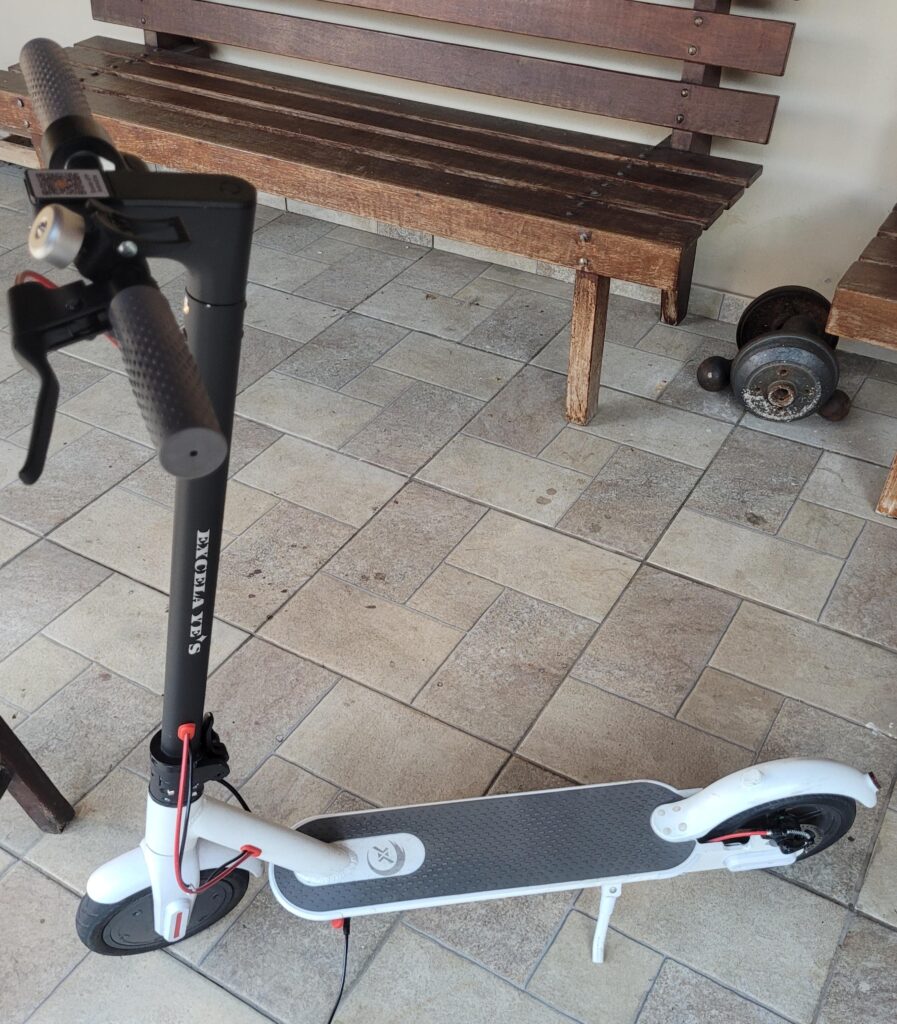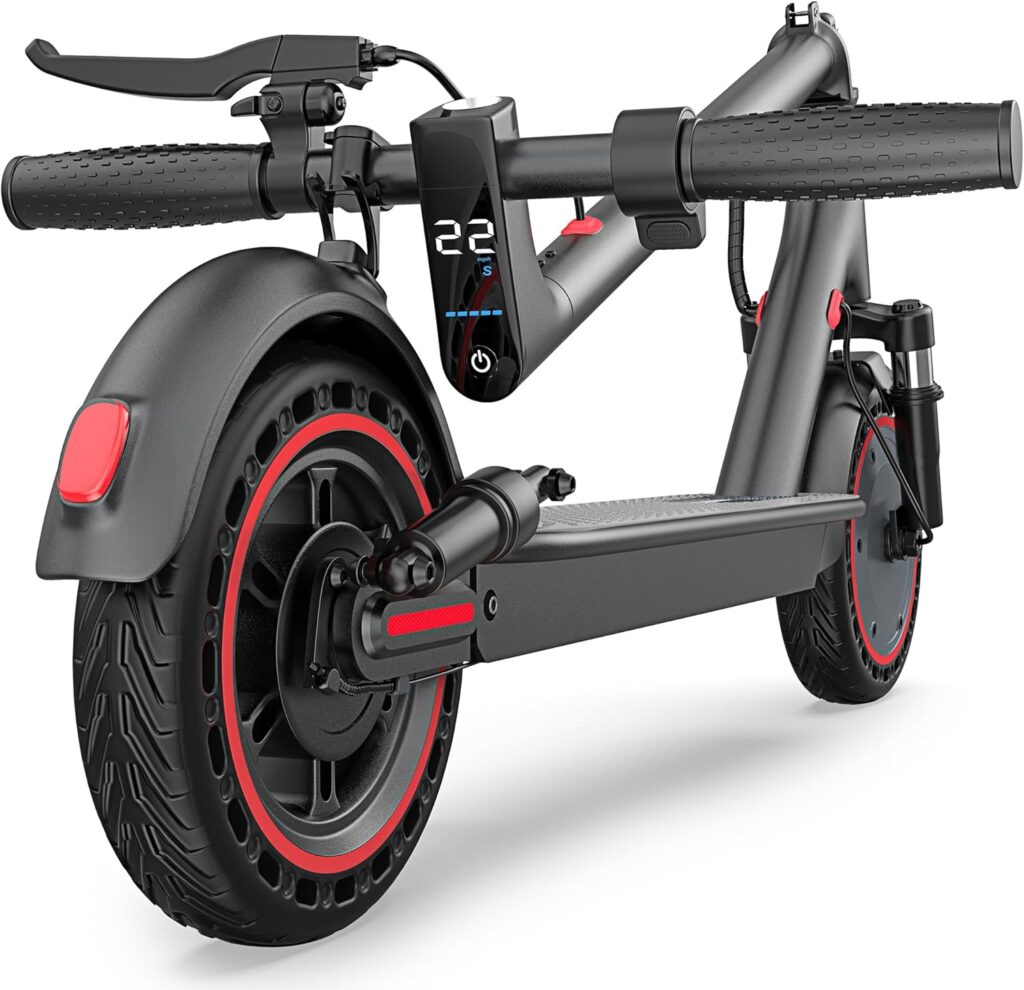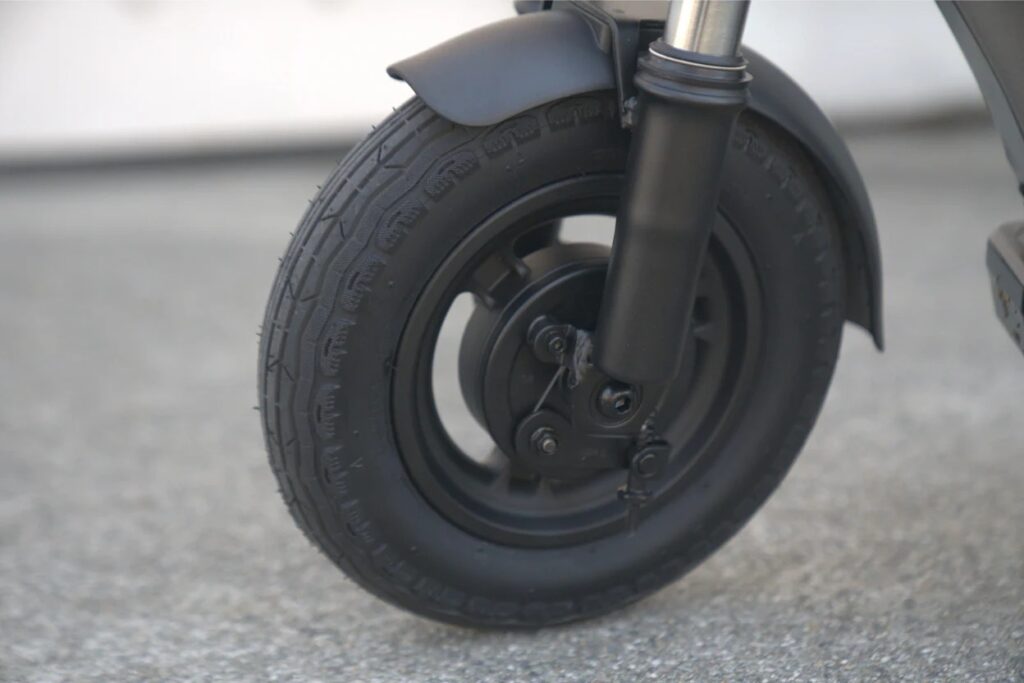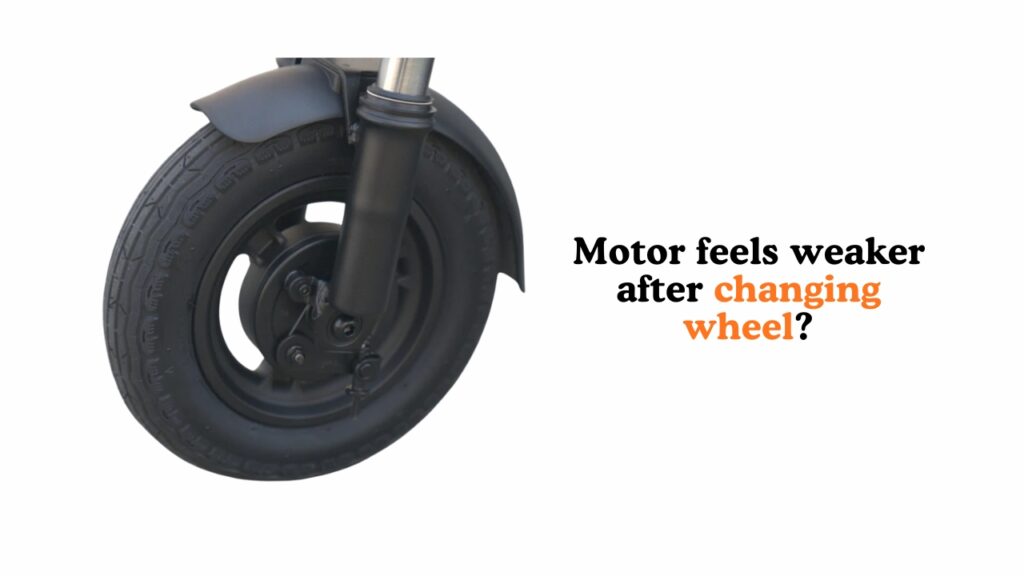If you recently changed the wheel or tire on your electric scooter and noticed a drop in speed, you are not alone. Many riders experience slower acceleration, weaker hill climbing, or a lower top speed after switching tires. This can be frustrating, especially if your Electric scooter used to reach higher speeds effortlessly. In this article, we will explore the common causes of this issue, provide practical troubleshooting tips, and share solutions to restore your scooter’s performance.

Common Causes of Motor Weakness After a Wheel Change
Heavier Tires
One of the most common reasons for reduced motor performance is the weight of the new tire. Solid tires, for example, are much heavier than air-filled pneumatic tires. This additional weight increases rolling resistance, which makes the motor work harder to achieve the same speed. Riders often notice slower acceleration and a lower top speed when using solid or reinforced tires.
Incorrect Tire Size
Even a small difference in tire diameter or width can affect motor efficiency. A larger tire requires more power to rotate, which can result in a lower top speed and slower hill climbing. Make sure to use a tire that matches the manufacturer’s specifications for your scooter. Using oversized or off-brand tires can also put extra strain on the motor and battery.
Brake Rubbing
Another common issue is brake drag. After installing a new wheel, the brake pads may press too tightly against the wheel, creating friction. This can feel like a weaker motor because part of the motor’s energy is used to overcome the drag. Check both front and rear brakes to ensure they are not rubbing against the tire.
Wheel Alignment Issues
Improper installation or misalignment of the wheel can also reduce performance. If the wheel is slightly off-center or the axle is not tightened correctly, it may rub against the frame or fender. This added resistance can slow down your scooter and reduce efficiency.
Motor Calibration or Sensor Issues
Some scooters use speed sensors to control motor output. After changing a wheel, the sensor may need recalibration. If the sensor is misreading the wheel rotation, the motor may not deliver full power. Checking for sensor alignment and recalibrating if needed can help restore performance.

Step-by-Step Troubleshooting Tips
1. Check for Brake Drag
Lift the scooter off the ground and spin the wheel by hand. If it slows down quickly or feels like it’s being held back, the brakes may need adjustment. Loosen the calipers slightly and retest.
2. Verify Tire Size
Compare the new tire to the original in diameter and width. Make sure it matches the manufacturer’s recommendations. Using a tire that is too large or too wide can strain the motor.
3. Inspect for Rubbing
Check if the tire is touching the fender or frame. Even minor contact can reduce speed. Adjust the wheel position or remove any obstacles that may cause rubbing.
4. Examine Wheel Alignment and Axle Tightness
Ensure the wheel is seated properly and the axle nuts are tightened correctly. A misaligned wheel can create extra resistance, making the motor feel weaker.
5. Check Battery and Motor Connections
Loose connections can reduce power output. Inspect wiring for the motor and battery terminals, and ensure everything is secure. A partially connected wire can result in lower speed and weaker performance.
Solutions & Fixes
Replace with Recommended Tire Type
If you switched to a heavier solid tire and notice performance loss, consider using a pneumatic tire instead. Pneumatic tires are lighter and provide better rolling efficiency, which improves speed and acceleration.
Adjust Brakes Properly
Proper brake adjustment is essential for smooth performance. Make sure brake pads are evenly spaced and do not rub the tire. Test by spinning the wheel to confirm minimal resistance.
Recalibrate Motor or Firmware
If your scooter has a speed sensor or motor controller, check the manual for recalibration instructions. Some scooters require a reset after wheel changes to ensure the motor operates correctly.
Lubricate Moving Parts
Lubricating the wheel bearings, axle, and any other moving parts can reduce friction and improve performance. Use a light silicone or bicycle-grade lubricant for best results.

Tips to Maintain Scooter Performance
- Check Tire Pressure and Condition Regularly: Proper tire inflation ensures smoother rolling and better speed.
- Use Compatible Tires Only: Avoid replacing tires with ones that differ significantly in weight or size.
- Maintain Battery Health: A fully charged and healthy battery supports stronger motor output.
- Perform Periodic Check-ups: Regularly inspect wheels, brakes, and motor connections to keep performance consistent.
Frequently Asked Questions (FAQ)
Why does a solid tire reduce speed?
Solid tires are heavier and create more rolling resistance, which requires the motor to work harder. This can lower top speed and acceleration.
Can changing wheels damage the motor?
Using a tire that is too heavy or incorrectly sized can strain the motor over time, potentially causing overheating or wear. Always use recommended tire sizes.
How to safely test for brake drag?
Lift the scooter, spin the wheel by hand, and observe if it slows down quickly. Adjust brake pads if necessary.
Should I upgrade my motor for heavier tires?
If you plan to use heavier tires consistently, a motor upgrade can help maintain speed, but proper installation and calibration are equally important.
Conclusion
A weaker motor after changing your scooter wheel is usually caused by heavier tires, brake drag, misalignment, or sensor issues. By carefully inspecting your scooter, making proper adjustments, and using compatible tires, you can restore performance. Regular maintenance, correct tire selection, and proper installation are key to enjoying a smooth, fast, and reliable ride. Always test your scooter after changes and share your experiences to help other riders troubleshoot similar issues.

